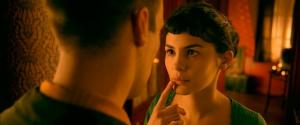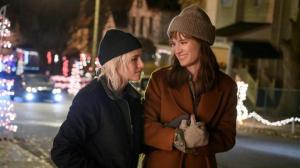Mel Gibson's The Passion of the Christ film: summary and analysis
Released in 2004, Passion of Christ is a film co-written and directed by American actor and director Mel Gibson. This film tells the events that occurred in the last 12 hours of the life of Jesus of Nazareth.
Visually, the film attempts to offer a quasi-documentary look at a key story within the Christian tradition.
Not suitable for sensitive people, Passion of Christ It crudely shows the level of sacrifice that its protagonist is willing to undergo, with the aim of saving humanity, through an act of dedication and love of neighbor.

Summary of the movie Passion of Christ
Warning, this summary contains important details from the movie!
The Garden of Gethsemane

Passion of Christ It begins with a reference to Isaiah 53, 5 in which the Messiah and his sacrifice for humanity are prophesied.
The action begins in the Garden of Gethsemane, where an agitated Jesus prays under the full moon. His disciples Pedro, Juan and Santiago are resting. At that moment, Satan appears and tries to convince Jesus to abandon his mission. Next, a serpent slides under Satan's clothes and approaches Jesus, who crushes his head.
Meanwhile, Judas Iscariot meets the priests of the temple in Jerusalem, who give him 30 pieces of silver in exchange for betraying Jesus. Judas leads the temple guards to the Garden of Gethsemane, where he meets Jesus and kisses him on the cheek. The guards seize Jesus and beat him while they take him to the temple.
In another scene, Mary, the mother of Jesus, and Mary Magdalene are in a room, when John appears informing them that Jesus has been arrested and taken to the temple.
Jesus is judged by the Sanhedrin

Once in the temple, the high priests, led by Caiaphas, accuse Jesus of blasphemy for proclaiming himself the son of God. One of the priests questions the legality of the trial, but is thrown out of the place. Caiaphas asks Jesus if he is the Messiah, to which Jesus responds: "I am, and you will see the Son of Man sitting at the right hand of God." The priests accuse Jesus of blasphemy and those present beat him and spit on him.
Soon after, Judas repents of betraying Jesus, asks Caiaphas to release him, and tries to return the silver pieces, but without success. Later, some children, demons of Satan, approach him and torment him. Judas tries to flee from them until he reaches the foot of a tree, near which lie the remains of a camel. Right away, he decides to take a rope and hangs himself.
Jesus meets Pontius Pilate and King Herod

The temple guards bring a beaten Jesus to the governor of Judea, Pontius Pilate, for him to condemn. Seeing Jesus, Pilate questions the priests the state in which he is. Caiaphas and the other priests accuse Jesus of being the leader of a dangerous sect and of forbidding his followers to pay tribute to the emperor.
Pilate meets alone with Jesus and asks him if he is the King of the Jews. Jesus answers that his kingdom is not in this world and that those who want to know the truth will listen to him. Pilate then asks Jesus "what is truth?" and brings him back to the priests.

Since Jesus is from Galilee, Pilate decides to send him to King Herod, who has this region under his command. Already in Herod's palace, the king interrogates Jesus, but the latter is silent. The king then claims that he is just a fool and orders that Jesus be removed from his sight.
In the next scene, Pilate meets his wife, Claudia Procula, and expresses his fears about the situation. Later, the Roman procurator tells the priests that neither he nor Herod have found Jesus guilty of any crime. The crowd is upset and Caiaphas questions Pilate's loyalty to Caesar.

Then, Pilate gives the choice between Jesus and Barabbas, a murderer, so that one of them is released. The crowd calls for Barabbas' release and for Jesus to be crucified. Pilate sends Jesus to be punished, instructing his soldiers not to kill him.
The scourging of Jesus

In a torture court, Roman soldiers laugh as they whip Jesus with nine-tailed cats. Satan watches the punishment, as he carries a small demon as if it were a baby.
The scourging of Jesus goes on for some time. Upon seeing a severely wounded Jesus, a soldier asks the others to stop as they are not aiming to kill him. The soldiers untie Jesus and place a crown of thorns on him, while making fun of him and continuing to beat him.
Mary receives some cloths from Claudia Procula and begins to wipe the blood from the floor on which Jesus was punished with the help of Mary Magdalene, while the latter remembers the moment when Jesus saved her from being he stoned.
Ecce homo

Pilate shows Jesus before the crowd, wounded and bloody, and says "here is the man", pointing out that he has received the punishment from him. The crowd continues to press for his execution and Caiaphas claims that releasing him is going against Caesar.
Given this, Pilate orders that the will of those present be done and washes their hands.
Jesus carries the cross to Calvary

The soldiers give the cross to Jesus, who must carry it from the city to Calvary. Jesus continues to be whipped, while showing a flashback of his arrival in Jerusalem, five days ago, when the people welcomed him.
Later, Jesus falls due to the punishment received and the weight of the cross and Mary approaches and consoles him. Soon after, Jesus falls again, so the soldiers ask a man, Simon of Cyrene, to help him carry the cross. The crowd and the soldiers mock Jesus, who falls again, and a woman approaches him and wipes his face with a cloth.

Before reaching Calvary, Jesus begins to faint. Simón prevents him from falling again and tells him that they are close and that everything is about to end. In other flashback Jesus is seen asking his followers to love his enemies.
Crucifixion and death of Jesus
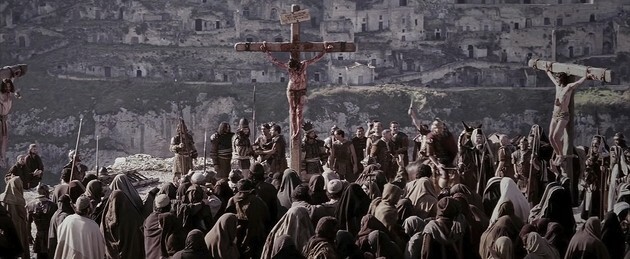
Upon arriving at Calvary, the soldiers nailed Jesus to the cross and crucified him in front of Mary, Mary Magdalene, John, Caiaphas and the rest of the crowd that followed his journey. In a flashback, Jesus shares bread with his disciples and asks them to love one another and tells them: “I am the Way, the Truth and the Life”.
Gesmas, a criminal crucified next to Jesus, yells at him to save himself and prove that he is who he claims to be. However, another condemned man, Dimas, affirms that both deserve that punishment, and that Jesus is innocent. Then Dimas asks Jesus to remember him when he reaches his kingdom, to which Jesus responds: "I tell you, this very day you will be with me in paradise."
Later, a dying Jesus looks up to heaven and asks God why he has abandoned him. Finally, Jesus says: "Father, into your hands I commend my spirit."
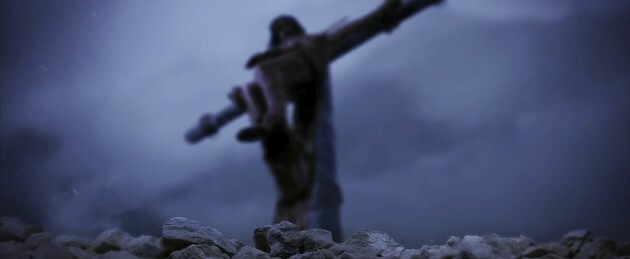
Jesus exhales his last breath and a drop falls from heaven, as an earthquake manifests. Some soldiers ensure that the crucified are killed, while others flee.
Meanwhile, in the temple in Jerusalem, the veil of the sancta sanctorum it is split in two, signaling the fulfillment of the prophecy about the Messiah. Caiaphas and the other priests cry when they see what happened.
Somewhere unspecified, Satan screams in despair at being defeated.
Tomb and resurrection of Jesus
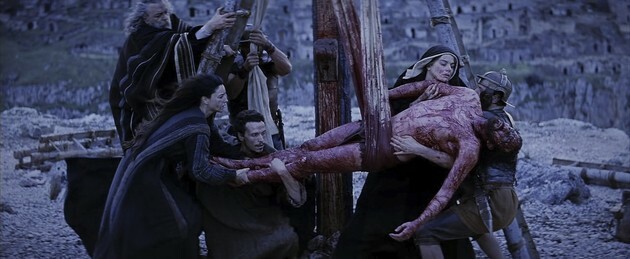
The soldiers lower the body of Jesus from the cross and remove the crown of thorns. Maria takes him in her arms and kisses her face. Juan and María Magdalena accompany him and they all remain silent.

Some time later, the exit from the tomb in which the body of Jesus is found is opened. The light enters and illuminates the cloak that covered Jesus on a pedestal. Finally, a naked Jesus is observed, with the marks of the nails in his hands, going to the exit of the tomb.
Film analysis
The Passion of the Christ is a visually well-made film, as well as quite controversial and somewhat limited at the narrative level. One of the great problems of the film is that the action focuses mainly on the physical punishment that Jesus receives and little on the implications of his sacrifice, within the context offered. In other words, the film does not establish why it is necessary for Jesus to be tried and crucified.
In general, Passion of Christ it holds a key moment in the life of a very important figure within the Christian religious tradition. However, Mel Gibson presents a very descriptive vision of passion, focused more on presenting events than on telling a story.
At a more specific level, at least two interrelated themes function as the engines of the action in the film: the love and sacrifice of Jesus, and the cruelty that he was willing to bear.
The love and sacrifice of Jesus
One of the most important themes of Passion of Christ it is that of sacrifice as one of the greatest expressions of love for one's neighbor. Mel Gibson makes use of the Gospels to express this idea. For example, in one scene, Jesus tells his disciples that "there is no greater love for a man than to lay down his life for his friends" (John 15:13).
Likewise, when Jesus is about to arrive at Calvary with the cross behind him, in a flashback quotes from the Gospel of Matthew (5, 43-46):
“You have heard it said that we should love those who love us and hate our enemies. But I say to you: Love your enemies and pray for those who judge you, because if you only love those who love you, what reward is there in it?
The message is clear: we must love even those who harm us. This love, and the love he finds in God, is what enables Jesus to gain the strength he needs to carry out his task.
A raw vision of passion
Passion of Christ spends most of its duration in a portrait of the last, agonizing and brutal moments of the life of Jesus. Basically, what Mel Gibson seeks is to show the rawness of the situation, avoiding treating the issue of the sacrifice of Jesus in a soft way, as in many other artistic interpretations. His goal is clear: to show every possible detail of Jesus' sacrifice.
Thus, Jesus never rests once he is captured by the Jerusalem temple guards, at least until the moment of his death on the cross. The desire to develop most of the film following the physical punishment to which the character of Jesus is subjected weakens the development of many of the other characters.
Also, in some moments, observing the punishment that Jesus suffers becomes somewhat difficult. The gore (blood) is used as one more character in the story, although there does not seem to be a justification for the amount of blood and suffering offered, at least within the narrative of the movie.
Main influences
No surprise that Passion of Christ have as its main foundation the biblical texts, in particular the four Gospels. However, Mel Gibson also makes use of non-biblical resources to build the world and the characters of the film.
The painful passion of our Lord Jesus Christ
One of the greatest influences of Passion of Christ is found in the narration of different visions of the Augustinian nun Ana Catalina Emmerick (1774-1824), transcribed by the writer and poet Clemens Brentano (1778-1842), described in the book The painful passion of our Lord Jesus Christ.
Mel Gibson uses The painful passion throughout the film, to construct various of the scenes and actions of various characters. For example, in the movie, when appearing before Jesus in the garden of Gethsemane, Satan questions him:
“Do you really think that one man can bear the weight of all sins? No man can carry this weight. I tell you. It's too heavy. Saving their souls has a very high cost. No man. Never."
In his visions, Emmerick mentions that Satan was in rejoicing at seeing Jesus suffer and tries to torment him, saying, “Are you willing to take this sin on yourself as well? Are you willing to suffer his punishment? Are you prepared to suffer all these sins? "
Another example of the influence of The painful passion In the film, it is observed in the relationship between Pontius Pilatos and his wife, Claudia Procula. In the Gospels, only the Gospel of Matthew (27:19) makes a brief mention of Claudia Procula. According to Emmerick's visions, Claudia begs Pontius Pilate to set Jesus free and not condemn him, to which Pilate agrees, promising that he will declare Jesus innocent. This also happens in the film, where both characters show a clear empathy for Jesus.
Stations of the Via Dolorosa
Drawing on the last hours of Jesus' life, most of the story presented in Passion of Christ It takes place through several stations that make up the Via Dolorosa. This path, located in the streets of Jerusalem, is made up of a series of canonical accounts and Apocrypha on the trial, condemnation, death and resurrection of Jesus, in different parts of the city of Jerusalem.
Scenes from his stations are presented in the film, from the moment that Jesus was before Pontius Pilate to be tried, until his burial. Among the most important stations are those that represent the flagellation of Jesus and the Stations of the Cross or Way of the Cross.
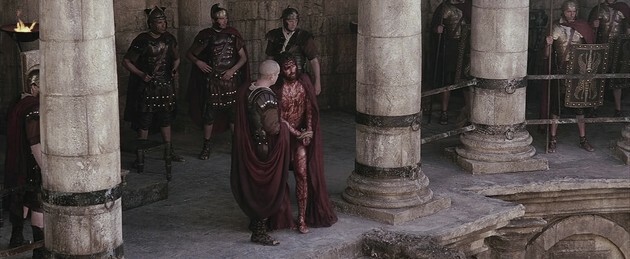
The fourth, fifth and sixth stations of the Via Dolorosa are used in the film as a contrast between the hatred or dislike that the crowd has towards Jesus, with the love and empathy of some characters. During these stations, Jesus meets his mother, Mary, Simon of Cyrene, who helps him carry the cross, and Veronica, a young mother who cleanses his face.
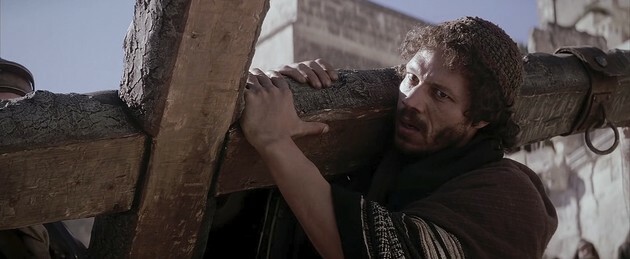
Cinematography and visual language
At the cinematography level, the task was carried out by the experienced American cinematographer Caleb Deschanel, who worked as a cinematographer at The patriot (2000), a film in which Mel Gibson had a leading role as an actor. Deschanel's work earned him an Oscar nomination in the category of best cinematography.
The style used by Mel Gibson and Deschanel in Passion of Christ he opts for a visualization of the environment that pretends to be realistic or naturalistic. At the same time, many slow-motion sequences are used, which, according to the director, are intended to create images and actions that look like something out of paintings.
One of his main objectives was to present the flagellation of Jesus in a crude form that is rarely shown in artistic works. Deschanel himself, in an interview for The American Cinematographer (The American cinematographer) comments that religious art is generally limited to showing a flagellated Jesus in a very "clean" way.
Artists who inspired the film's language and visual style include Caravaggio (1571-1610), Théodore Géricault (1791-1824), and Michelangelo (1475-1564).

In the case of the artists Caravaggio and Géricault, Deschanel is inspired by the style they used in their paintings, in terms of lighting and composition. For example, in the scenes that take place at night, the lighting used is based on the chiaroscuro technique of these artists.
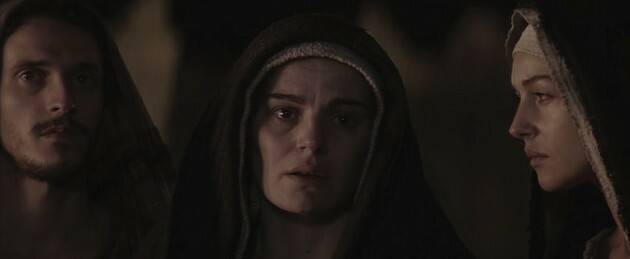
This choice was not based so much on copying a certain work, but on reproducing the features that these artists' paintings reveal, particularly in the facial expressions of the characters. Thus, a contrast would be built between the punishment that Jesus suffers and what is observed in the face of direct witnesses.

As for Michelangelo, the famous work La Pietà (La Piedad) is used as a reference in one of the scenes, when Mary holds the body of Jesus in her arms.


Learn more about The passion of Christ in art: works and meanings.
Main planes and lighting used
When a film is directed, both the person in charge of the general direction, as well as the one who makes the cinematography, make choices designed to communicate what they want to say in each frame.
Mel Gibson and Deschanel mainly opt for the use of close-ups and close-ups, seeking to isolate the characters, with the intention of establishing an intimate relationship with the audience. The general and medium shots are used to a lesser extent and with the intention of contextualizing the action.

It is not fortuitous that most of the lenses used to capture the images were above 40mm (even reaching 600mm) in anamorphic format, which are widely used for framing portraits due to their low level of distortion of the proportions of the objects.

It should be noted that Mel Gibson chooses to "show" and not "tell." Most of what happens is observed in action, and the characters rarely tell the audience what is happening. It is precisely the visual language, the planes, frames and angles, which comment on the action.

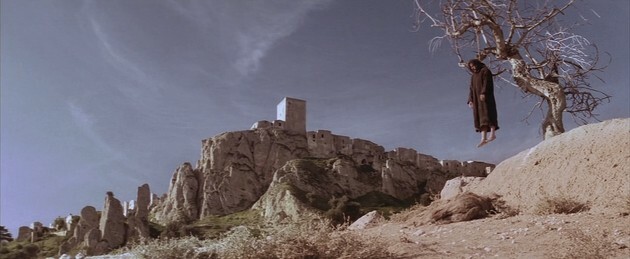
In the lighting section, the film tries to maintain a natural or realistic level, with the intention that the audience feels that they are observing a real, quasi-documentary event. For example, in the scenes in which Jesus is scourged, carries the cross, and is crucified, Deschanel opts by not using diffusers, so the light creates very defined shadows, as naturally occurs during the day.

In the case of flashbacks of Jesus, the tones are usually warm and the light is soft. This causes the audience to recognize that, on the one hand, it is a memory or event that occurred in the past and, on the other hand, show the character of Jesus as a being noble and calm.
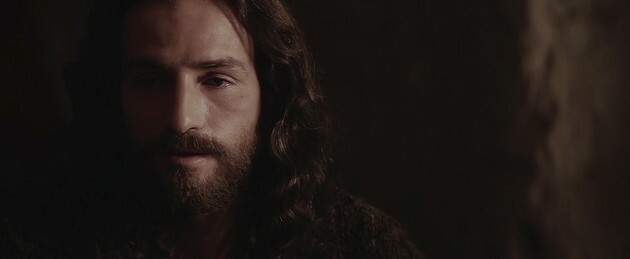
In the scenes that take place at night outdoors, blue tones are used, with the help of electric lighting. Deschanel himself says about it that "never has so much light been used to create so much darkness".
Both the lighting and the use of short shots, and the fact that they used languages of the time, are examples of the level of immersion that Mel Gibson and Deschanel sought to achieve.
Main characters
Jesus of Nazareth

The film introduces the character of Jesus both divine and human. The director does not construct an idealization of Jesus as a stoic or immutable figure. On the contrary, he shows him as a man who suffers pain, spiritual and physical from the first scene of the film, full of great love for his fellow men.
Thanks to the performance of Jim Caviezel, who is able to express many emotions simply by Through his gaze, this interpretation of Jesus exhibits in his body language a plethora of emotions. It is possible to observe the pain, the joy and the sadness about what the responsibility that he has to assume as the Messiah implies. Jesus smiles, cries, prays to God for strength, embraces his mother and kisses her forehead, is upset, he suffers, shares with his disciples, confront without fear those who accuse him, among many others things.
The film does not show a passive Jesus, who is at the mercy of what they make of him. The scourging that he suffers is the obstacle that he must pass as the hero of the story, without giving up and overcoming the temptation to avoid punishment.
In this case, the ability to bear not only the sins of the world, but also that punishment, are partly due to divinity. the character of Jesus and the idea of the great love that he has for humanity that the director proposes with his story and Actions.
Jesus does not ask for suffering, but he is willing to endure it and knows what it means. This is the way the movie hero triumphs.
Satan
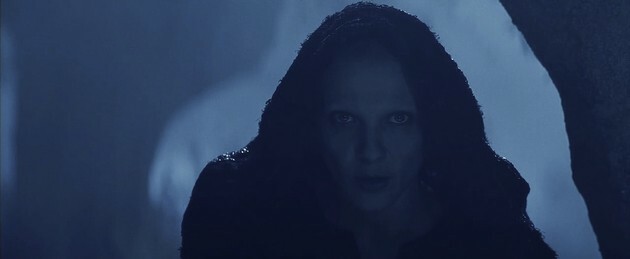
The figure of Satan is that of an androgynous being, with a cold gaze, with a threatening and firm expression, which causes an impact every time he appears on the screen. Among his attributes is that of being manipulative and having the ability to influence, to some extent, the actions of other characters.
Satan's visual choice, presented with a certain aesthetic "beauty", was deliberate on the part of the director. For Mel Gibson, the traditional way in which Satan is represented, in art in general, is not the way in which he considers himself to be manifested in the world. That's why, according to Gibson, the character was designed in the movie to represent more of an attractive and symmetrical being, rather than some kind of horned monster.
This character was played by the Italian actress Rosalinda Celentano, who, like Jim Caviezel did with Jesus, offers depth to it through her gaze. In most of his interventions, Satan seems to be in apparent control of his gestures moving through the agitated crowd, and tormenting several of the characters.
Mary, mother of Jesus
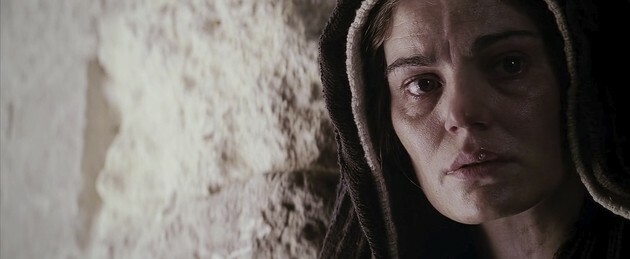
Maria is represented by Emilia-Maia-Ninel Morgenstern. Within the film, Mary, mother of Jesus, is a character who captures part of the sensitivity and love that seems to be lacking in the world of the film. Furthermore, despite the situation in which she finds herself, the character of Maria is not victimized.
Mel Gibson tries with this character that the audience identifies with an internal pain, different from the one that Jesus suffers. The director uses the archetype of mother's love to counteract the hatred displayed by other characters. For Mary, it is not only the savior of humanity who is on the cross, but he is also her son.
Pontius Pilate and Claudia Procula
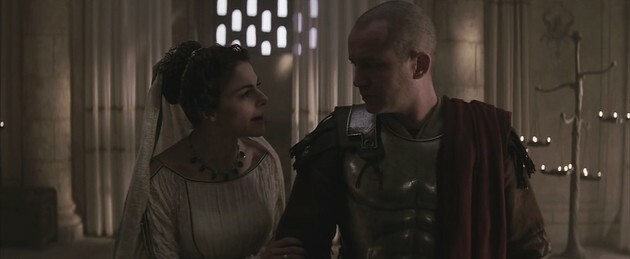
Pontius Pilate, represented by Hristo Naumov Shopov, is the Roman procurator in Jerusalem, famous for the episode in which he washes his hands after condemning Jesus to be crucified. This character is in the middle of an internal battle, since he considers Jesus innocent, but he fears for his own situation, given the possible consequences of not condemning him.
Much of Pilate's motivation, however, is shown in his dislike of the high priests, at least in the way he is portrayed in the film. On several occasions, Pilate and Caiaphas conflict over a question of power and the decision to free or condemn Jesus.
His wife, Claudia Procula, tries to convince Pilate not to condemn Jesus, due to visions she has had of him. She gets to interact briefly with Maria on one occasion, showing her empathy for what happens.
Caiaphas, the high priest
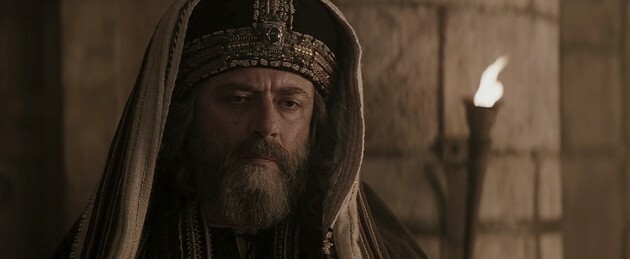
Mattia Sbragia represents Caiaphas. Along with Satan, Caiaphas, the high priest of the temple in Jerusalem, is one of the antagonists of the film. Caiaphas wishes to see Jesus put to death for blasphemy and leads the other priests, and the crowd in general, in their quest to achieve that goal. This character is one of the most one-dimensional in the movie. His only intention is to end Jesus and not much else is known about him.
Main controversies of the passion of Christ
Use of excessive graphic violence
Perhaps the biggest controversy around Lthe passion of Christ it is the amount of violence, blood and rawness that the film exhibits. This led to it being classified as not suitable for minors in many countries. For example, it was rated "R" in the United States, "C" in Mexico, and "+18" in Spain.
Mel Gibson wastes little time before demonstrating the brutality that the character must face. The director affirmed at the time that the film does not offer gratuitous violence and that it was a way of showing what Jesus had to happen, which, according to him, is almost never illustrated when the story of the passion of Jesus Christ is told in different media.
The flagellation of Jesus alone lasts almost 15 minutes. Added to this is the beating he has been subjected to since he is captured, and all of his passing through the Via Dolorosa, until his crucifixion.
However, within the narrative of the film there is no reason that determines whether the character of Jesus was worthy of the kind of physical punishment he suffers. For this reason, many critics rated the film as “torture porn”, A style typical of horror cinema.
Possible signs of anti-Semitism
Passion of Christ became embroiled in another controversy over the way Mel Gibson portrayed Jews in the film. In simple words, anti-Semitism refers to hostile treatment and discrimination against Jews, based on prejudice and stereotypes.
The film draws the vast majority of the characters of the Judean people as a crowd that you only want to see Jesus suffer and die for feeling that it threatens your beliefs and / or power political-religious.
In the particular case of religious leaders, Jewish high priests want to see Jesus humiliated and crucified, without being willing to negotiate a middle ground.
For example, in one scene Caiaphas directly challenges Pilate and alleges that freeing a man who calls himself a king is insulting Caesar, angrily demanding the crucifixion of Jesus.
In contrast, even if Roman soldiers are characters who also enjoy inflicting punishment on Jesus, the leaders and representatives of Rome who have contact with Jesus are presented as characters with empathy and conflict internal
Some curiosities of the film The Passion of the Christ
- Passion of Christ It is the highest grossing “R” (of legal age) film in the United States of all time, totaling $ 370.782.930 million.
- There is a version recut (edited) of the film, with about five minutes less, launched before the controversy for the amount of graphic violence that the original version has. However, this version was not very successful.
- Also, the film was cataloged by the magazine Entertainment Weekly in 2006 as the most controversial film of all time.
- Mel Gibson's decision to select an actress to play Satan was based on showing a Satan "attractive" (tempting) and androgynous, moving away from the image of the traditional horned monster.
- On Passion of Christ, Mel Gibson chose to make use of Latin and Aramaic as the languages spoken by most of the characters to increase the audience's immersion and authenticity of the film.
About Mel Gibson
Mel Colmcille Gerard Gibson is an American actor and director born in 1956. As an actor, Mel Gibson has been a part of very popular action franchises, particularly during the 1980s and 1990s, including the series Mad max Y Lethal Weapon (Lethal weapon).
Regarding his career as a director, Mel Gibson is characterized by telling stories with an epic nuance, based on real events or with a certain degree of historicity. Artistically, his films aim to visually contextualize themselves with some fidelity, rejecting unnecessary ornamental elements.
Among the best known films of him as a director are Braveheart (Brave Heart), Apocalypto, Hacksaw ridge (To a man) and of course, The Passion of the Christ (Passion of Christ).
Data sheet
- Year: 2004
- Direction: Mel Gibson
- Main cast: Jim Caviezel (Jesus), Maia Morgenstern (Mary), Hristo Shopov (Pontius Pilate), Mattia Sbragia (Caiaphas), Rosalinda Celentano (Satan), Monica Bellucci (Maria Magdalena), Luca Lionello (Judas Iscariot)
- Script: Benedict Fitzgerald and Mel Gibson
- Production: Bruce Davey, Mel Gibson, Stephen McEveety and Enzo Sisti
- Music: John debney
- Cinematography: Caleb Deschanel
- Edition: John Wright, Steve Mirkovich (cropped version)

